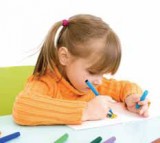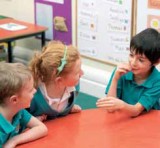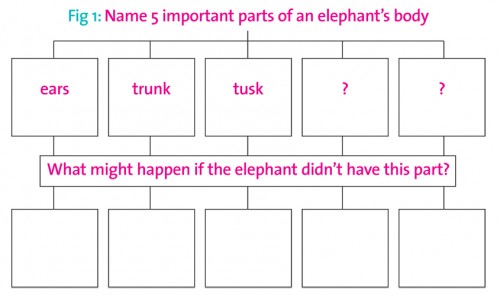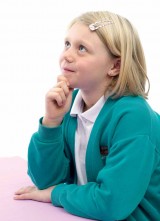Thread thinking skills into your science lessons, says Gaynor Weavers, and young learners will flourish...
Ending his lecture on teaching and learning, a favourite tutor of mine said, “If the lesson you’ve planned doesn’t require your pupils to think, then find another way for them to do it!”
I was a student then but, in the intervening years, I’ve found myself standing in many a classroom and remembering his advice.
Was this the precursor of those two words – ‘thinking skills’ – that are bandied about so freely at the moment? Maybe it was. Certainly, I’ve found that making things intriguing and challenging leads to good outcomes for primary children.
The idea of teaching thinking to enhance learning is not new. Since the review by Carol McGuinness in 1998 and the explicit inclusion of thinking skills in the National Curriculum, interest in this approach has developed rapidly in the UK.
 Good thinking is not always spontaneous; it benefits from clear and explicit guidance and instruction. Active, conscious and mediated learning is the most effective. In other words, pupils should be encouraged to contemplate their own thinking, work with their teachers to develop thinking skills and incorporate prior knowledge into any new learning.
Good thinking is not always spontaneous; it benefits from clear and explicit guidance and instruction. Active, conscious and mediated learning is the most effective. In other words, pupils should be encouraged to contemplate their own thinking, work with their teachers to develop thinking skills and incorporate prior knowledge into any new learning.
Research shows that developing pupils’ thinking ability will improve their overall performance and ability to transfer skills to other situations. It can help to make children more engaged in your lessons, too. Thinking skills shouldn’t be seen as a ‘bolt-on’ set of strategies to be used willy-nilly but part of a ‘climate’ of learning across the whole school that will support and stimulate thinking in all aspects of the curriculum.
Thinking skills play a particularly important role in science lessons. Their development will encourage pupils to observe clearly, to raise questions about their observations and to classify and group effectively. As pupils gain understanding, they will make predictions, conclusions, explanations and regular evaluations of their work with much greater confidence.
Thinking requires effort! So what can we do to make thinking more ‘visible’ in the classroom? Certainly, we can encourage our pupils to talk about their thinking and learning with us, with another pupil or with larger groups of pupils. It is well known that a challenge can motivate even the most laid back learner and by building up a repertoire of strategies for thinking and learning, children will discover what helps them to learn across all the subjects they study.
‘Starting Blocks’ is a good group game for encouraging thinking and discussion. Working in groups of six, pupils take turns to roll a dice and answer the question that corresponds to the number shown. They do need to come up with an answer, but team-mates can help.
For example, if pupils revisit the topic of forces:
1 What do you already know about forces?
2 What do you want to learn about this topic?
3 Does anything worry you about this topic?
4 Write down something you don’t understand about forces.
5 How might this game help you to learn about forces?
6 Write down something a team-mate has said that you disagree with.
Keep going until the group has an answer to all six questions. If you throw a number twice, answer the question twice. If you throw the same number more than twice in the game, ignore it and throw the dice again.
A faster, five minute game called ‘Icebreaker’ encourages thinking and explanation as pupils must consider a problem and then justify their solution to the rest of the group or class.
For example:
Which is the odd one out?
• kettle
• candle
• clothes iron
• radio
David may say, ‘It’s the candle because it’s the only one which doesn’t use electricity.’ whereas John says, ‘The kettle, because all the others get very hot quickly.’ The debate about whether either or both can be correct is equally important here.
Giving your pupils a clear idea of how the current lesson fits in with what has gone before and what is still to come develops a more mature understanding. At this stage we describe clearly the learning objectives and outcomes. Some teachers use WALT, WILF and TIB strategies to get these across.
• We Are Learning To draw a food chain.
• What I am Looking For is that you will be able to describe some food chains yourself by the end of the lesson.
• This Is Because we are visiting an environmental centre next week and you will be exploring three habitats. Then you will be looking for as many food chains as you can find.
This helps to clarify teacher expectations and will outline the rationale behind the lesson.
 Midway through a lesson may be the time that you want pupils to communicate their understanding. Graphic organisers are brilliant tools for doing just that. Ask them to complete a table like the one to the left (see fig. 1) on their own or with a partner. This allows you to check understanding too.
Midway through a lesson may be the time that you want pupils to communicate their understanding. Graphic organisers are brilliant tools for doing just that. Ask them to complete a table like the one to the left (see fig. 1) on their own or with a partner. This allows you to check understanding too.
The second part of this graphic organiser requires pupils to explain the function of different parts of the animal – a higher order skill in both language and science.

 Eventually, you need to establish what your class has learned and give time for pupils to reflect on their own learning. What helped them learn? What did they find difficult? This is the time where you give opportunities for pupils to demonstrate their understanding - a short period to review, recall and reflect.
Eventually, you need to establish what your class has learned and give time for pupils to reflect on their own learning. What helped them learn? What did they find difficult? This is the time where you give opportunities for pupils to demonstrate their understanding - a short period to review, recall and reflect.
Plan for formative assessment and use the outcomes to guide future teaching. Research shows that review is vital for long-term learning and recall, so we should try to incorporate a variety of reviewing techniques into lessons.
It’s also worthwhile encouraging pupils to teach others what they have learned. For example, you could use a Pair, Share, Square activity. Here a pairs of learners talk about what they have learned. They then join another pair and exchange further information.
Using a Thinking Mat is an excellent way for groups of four to consolidate and review their learning (see fig.2).

• Each pupil writes three things they know about the planets from their last lesson in their own blue area of the paper.
• As a group they discuss their ideas and agree on five key things they know about the planets.
• They write these into the pink central area.
• Envoys are used to share ideas with other groups.
There are a multitude of thinking skills resources in the form of programmes and strategies to help you develop your own planning and teaching skills in this area. Incorporating a range of techniques and strategies over a period of time will enliven your lessons and enhance your pupils’ learning. You just need to think about it.
References: De Bóo, M. (2004) ‘Using Science to Develop Thinking skills at Key Stage 1’, David Fulton Publishers,
Use these ideas to gauge children’s progress
1. Writing or drawing a prediction of what will happen:
• ‘I’m going to add some cooking oil to the golden syrup in this jar/beaker. What do you think will happen? Quickly draw your ideas first before I do it.
• Did what happen match your drawing? Were you surprised?
• Now I’ll add some water to the other two liquids; but before I do, draw what you think the result will be.
2. Using concept cartoons to test out ideas
• ‘Let’s all look at this Concept Cartoon of the Snowman. One child thinks putting a coat on will make the snowman melt faster, the second thinks it won’t make any difference and the third thinks that, actually, it will slow the melting down. What do you think? Can you plan an investigation to test out your ideas?
3. Using drama to demonstrate knowledge and understanding
‘We’ve been studying magnetism this term. Can you work in small groups and discuss how you could show some or all of these things?’:
• Similar poles repel each other
• Opposite poles attract each other
• Magnets will ‘work’ through some materials
• Some magnets are stronger than others
Name 5 important parts of an elephant’s body
ears trunk tusk ...? ...?
What might happen if the elephant didn’t have this part?
Reorganise your music room
Ace-Music
How to use Harry Potter to engage high-ability learners
Ace-Languages
5 Ways To Celebrate World Book Day
Ace-Classroom-Support
